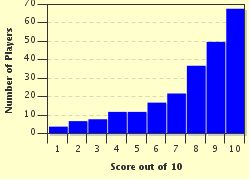Quiz Answer Key and Fun Facts
1. Papua New Guinea is located on the island of New Guinea, just north of Australia, seen at the bottom of this map. It is on the east half of the island, the west half of which is part of what country?
2. As this map shows, Papua New Guinea is located in a region that is prone to frequent earthquakes and which has many active volcanoes, highlighted in pink on the map. What is the nickname commonly given to this region?
3. As well as the main island region, Papua New Guinea includes a number of nearby islands. The furthest east of these, Bougainville, is geographically (although not politically) part of which if these island groups?
4. Port Moresby was a point of strategic significance during World War II, when the Japanese tried to capture it to establish an air and sea base that would help keep Australia from playing a significant role in the war. What body of water would have come under their control had they succeeded?
5. As this map shows, there is a large mountainous area running the length of the island of New Guinea, where you will find Mount Wilhelm, the highest point in Papua New Guinea. What is the name given to this mountain range?
6. This satellite photo shows the stark contrast in climate between Papua New Guinea and its nearest neighbour to the south, Australia. What is the name for the body of water which separates these two nations at the point where they are closest to each other?
7. Many young Australians (and some very fit but not so young ones) hike in the footsteps of the 19th century miners who dug for gold in the Yodda Kokoda goldfields, starting from Owers Corner, 50 km (30 mi) east of Port Moresby. What is the name of this route, made famous during World War II?
8. This map shows the mouth of the Fly River as it empties into the Gulf of Papua. What is the name given to this triangular spreading often seen at the mouth of a river due to sedimentary deposits?
9. Nearly three-quarters of Papua New Guinea's export earnings come from minerals. Which of these agricultural products is also part of a significant export industry?
10. Papua New Guinea features its national bird both on its official Coat of Arms (shown here) and on its flag. What bird is this?
Source: Author
looney_tunes
This quiz was reviewed by FunTrivia editor
Tizzabelle before going online.
Any errors found in FunTrivia content are routinely corrected through our feedback system.

